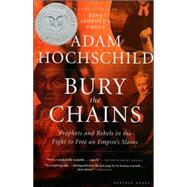
Note: Supplemental materials are not guaranteed with Rental or Used book purchases.
Purchase Benefits
What is included with this book?
| Introduction: Twelve Men in a Printing Shop | 1 | (10) | |||
| PART I: WORLD OF BONDAGE | |||||
|
11 | (19) | |||
|
30 | (11) | |||
|
41 | (13) | |||
|
54 | (15) | |||
|
69 | (16) | |||
| PART II: FROM TINDER TO FLAME | |||||
|
85 | (13) | |||
|
98 | (8) | |||
|
106 | (16) | |||
|
122 | (21) | |||
|
143 | (9) | |||
|
152 | (15) | |||
| PART III: "A WHOLE NATION CRYING WITH ONE VOICE" | |||||
|
167 | (14) | |||
|
181 | (18) | |||
|
199 | (14) | |||
|
213 | (13) | |||
|
226 | (15) | |||
| PART IV: WAR AND REVOLUTION | |||||
|
241 | (15) | |||
|
256 | (24) | |||
|
280 | (8) | |||
|
288 | (11) | |||
| PART V: BURY THE CHAINS | |||||
|
299 | (10) | |||
|
309 | (24) | |||
|
333 | (22) | |||
| Epilogue: "To Feel a Just Indignation" | 355 | (14) | |||
| Appendix: Where was Equiano Born? | 369 | (4) | |||
| Source Notes | 373 | (55) | |||
| Bibliography 409 Acknowledgments | 428 | (4) | |||
| Index | 432 |
The New copy of this book will include any supplemental materials advertised. Please check the title of the book to determine if it should include any access cards, study guides, lab manuals, CDs, etc.
The Used, Rental and eBook copies of this book are not guaranteed to include any supplemental materials. Typically, only the book itself is included. This is true even if the title states it includes any access cards, study guides, lab manuals, CDs, etc.
Excerpted from Bury the Chains: Prophets and Rebels in the Fight to Free an Empire's Slaves by Adam Hochschild
All rights reserved by the original copyright owners. Excerpts are provided for display purposes only and may not be reproduced, reprinted or distributed without the written permission of the publisher.